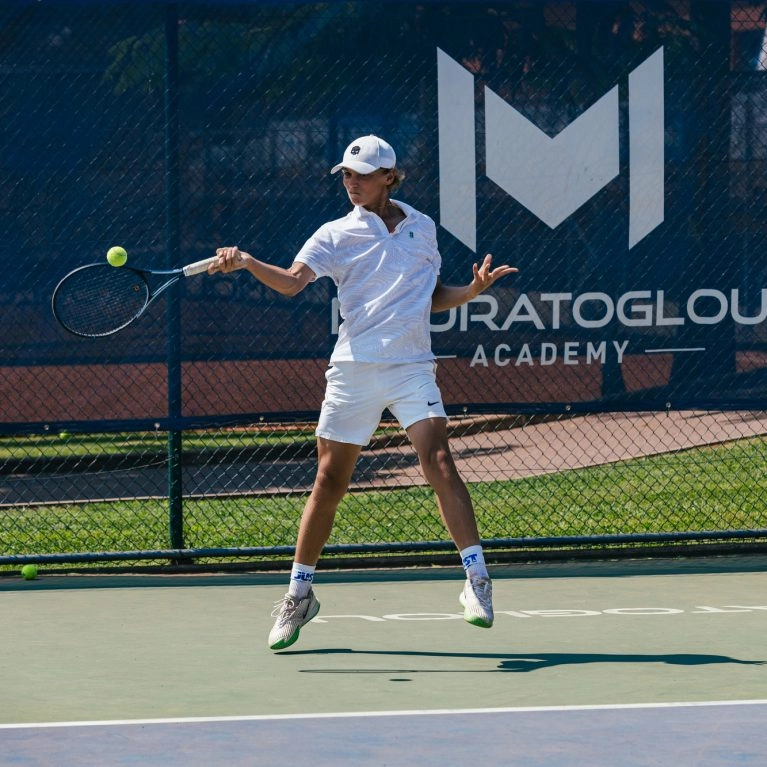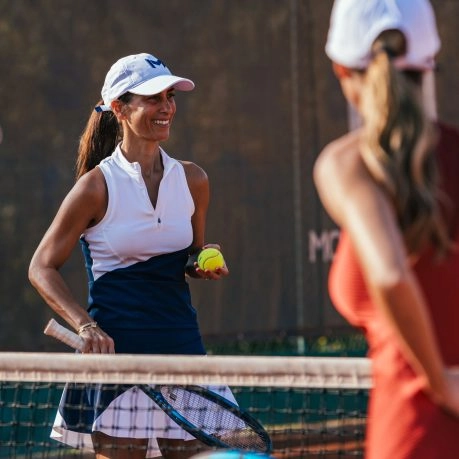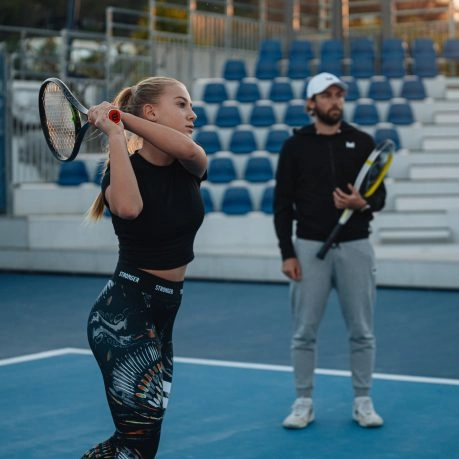
The forehand is without doubt one of themost decisive movements in tennis. It offers a combination of power and precision that can destabilise your opponent and dominate the rally. To execute this stroke correctly, theaccompaniment after the shot is essential. It ensures fluidity and transmission of the power generated by the body while controlling the trajectory of the ball.
In this article, we’ll look at the importance of thefollow-through on the forehand, how to position your body correctly and tips on how to maximise the effectiveness of your shots. Whether you’re a beginner or an experienced player, the tennis study based on the Mouratoglou Methodology will give you the keys to perfecting this essential tennis movement.
Understanding forehand support
The follow-through is the part of the movement that follows contact between the racket and the ball. It is essential to ensure a fluid stroke and good precision in the direction you want the ball to go. A well-executed forehand involves continuity of movement, which doesn’t stop when the racket meets the ball.
- Fluidity of movement: If the accompaniment is cut off abruptly, the stroke becomes jerky, reducing power and control. Allow your stroke to continue naturally along the same trajectory.
- Directional control: By following the direction you want the ball to go with your forehand, you increase your chances of placing the ball exactly where you want it, whether deep or in the corners of the court.

The racket grip: a key element
A good forehand starts with the right grip. The most popular grip today is the semi-western grip, as it provides a good combination of control, power and lift. It also helps to generate good lift on the ball, which is crucial in the modern game.
Semi-western grip: Ideal for hitting lifted balls, it allows you to lift the ball more easily, especially when it’s higher up. On the other hand, a more closed grip, such as the western grip, can also offer more spin.

Positioning and preparation
Before you even begin your forehand stroke, it’s crucial to adopt a good position and prepare your movement well. This will give you a smoother, more effective stroke.
- Starting position: Your body should be in a stable position, with your legs slightly bent and firmly planted on the ground. This stability will allow a good transfer of energy when you’re about to strike.
- Rotate your shoulders: As soon as the ball approaches, rotate your shoulders so that your whole upper body is involved. This creates a good reserve of energy before impact.

The point of contact and the strike
The point of contact is the key moment when the racket meets the ball. A good contact point is generally in front of you, at waist height. This is where the power of the forehand is generated, thanks in particular to good weight transfer.
- Contact with the ball: Ideally, impact should be slightly in front of you. This allows you to direct the ball better while maximising power. If you hit the ball too late, you risk losing control.
- Weight transfer: The weight of your body should shift from your back leg to your front leg when you strike the ball. This transfer maximises power while maintaining good balance.

Accompaniment: the crucial phase of the forehand stroke
The follow-through is the stage that follows the point of contact with the ball. It’s what guarantees the fluidity of your movement and the accuracy of your shot. A good follow through should be natural and not forced.
- Fluid follow-through: After hitting the ball, let the racket follow the movement of your forehand. If you’re looking to generate topspin, the racket should finish above the opposite shoulder.
- Finishing the stroke: For a flat shot or a more direct forehand, the accompaniment can be less pronounced. However, never cut off the stroke too early, as this can reduce ball control.

Variations on the forehand
Once you’ve mastered the forehand follow-through, it’s important to introduce variations to make you a more complete and unpredictable player on the court.
- Lifted forehand: By rubbing the ball up and down, you generate a lifted effect that makes the ball bounce higher. A more pronounced and higher accompaniment is required for this type of shot.
- Flat forehand: In a flat stroke, the movement is more direct, without trying to rub the ball. The follow-through is shorter, but always present to ensure good accuracy.
Common mistakes to avoid
The wrong accompaniment can make your forehand less effective. Here are the most common errors and how to correct them:
- Stopping too soon: This can make your shot less powerful and imprecise. Make sure your movement continues after impact.
- Not using your whole body: If you only use your arm to strike, you risk lacking power. Engage your whole body, including your legs and hips, to maximise your strike.
- Late strikes: If you hit the ball too late, it’ll be difficult to follow through. Work on your timing to hit the ball at the right moment.

















